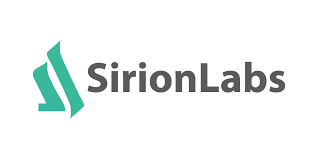
Effectively assessing and minimizing potential hazards contained within each active agreement in your portfolio is a mission-critical priority.
The Crippling Costs of Unmanaged Contract Risk
According to research conducted by World Commerce & Contracting, ineffective contract management practices cost businesses an average of 9% of their annual revenues—a massive hit to the bottom line of an enterprise of any size. Failing to mitigate contractual exposure can have a catastrophic effect, exposing your organization to a multitude of risks, including:
- Missed contractual obligations and deliverables
- Failure to meet contract thresholds
- Regulatory non-compliance
- Non-compliance with internal policies
- Revenue leakage
- Cost overruns
- Scope creep
- Lost business opportunities
- Legal exposure
- Loss of intellectual property
- Reduced bargaining power
- Ineffectual demand management
- Uninformed purchasing
- Deliberate contract manipulation
- Damage to business reputation
By carefully managing risk exposure, your organization can ensure that your active contracts serve as an invaluable asset rather than an overlooked liability.
The Impediments of Data Silos
The full value of contract data is only realized when it becomes a resource shared enterprise-wide with stakeholders having complete contract visibility. However, holding contracts captive in data silos—where data is controlled by a single department and isolated from the rest of the organization—leaves your stakeholders blind to contract data and severely limits its value to your organization.
From negotiation through implementation and maintenance, a contract requires the expertise and input of personnel across the enterprise—not just the attorneys who draft the contract. But also the team members who will be charged with successfully executing it. Providing all stakeholders across functions and systems with direct, easy access to essential contract data enables them to understand the terms of an agreement, and how they are meant to fulfill those terms. This cultivates partnerships, both internally (between individuals as well as departments) and externally (between the organization and its commercial partners).
Clearly, implementing an effective contract management system is essential for mitigating risk. So how do you determine which CLM is right for your company?
Start with a Requirements Checklist
A smart way to begin the process is to take stock of everything you’ll require from your contract risk management system. Simply draw up a checklist of requirements. This checklist will help you identify the priorities for developing a system that infuses your organization with the ability to efficiently identify, reduce, and resolve exposure to pitfalls at every stage of a contract lifecycle.
As you compile your checklist, keep a tight focus on the following essential qualities of effective contract risk management:
- Change management – Your system must allow you to maintain a trail of all changes and amendments made at every stage of each contract, including changes in the scope/statement of work (SOW) and master service agreements (MSA); updates to clauses, pricing, and schedules; terms and conditions; and any amendments or addendums that might introduce new risk to the contract. Failure to communicate changes and maintain a complete audit trail of approvals, changes, and sign-offs undermines the ability of stakeholders to remain up-to-date on contract terms.
- Transparency – All stakeholders must be able to easily access an agreement to ensure it is executed. Contract transparency empowers everyone to understand the scope, recognize the risks and compliance requirements, follow the schedule, and review timely updates.
- Collaboration ─ The best contracts are made and maintained when legal teams, technical teams, and subject matter experts work together at every step of the process to define a contract’s scope, identify risks, resolve issues, and clarify responsibilities. Insufficient input from key stakeholders could result in your organization bearing the burden of excess regulatory and financial liabilities.
- Consistency ─ Standardized contract language applied consistently enterprise-wide protects against deviations and minimizes exposure across your contract portfolio.
A comprehensive checklist can help you identify the requirements and objectives of a system that will reinforce the guardrails protecting your organization against contract risk. But how do you actually put those processes into place in a consolidated, centralized system?
The answer is state-of-the-art contract lifecycle management (CLM) software.
Checking All the Boxes with AI-Led CLM
A smart, AI-led CLM system unlocks the full potential of contract data to create efficiencies and mitigate risk at every step in a contract’s lifecycle. By digitizing contracts, AI-powered CLM enables contract extraction and analytics across hundreds of metadata and clauses. This digital transformation creates smarter contracts that provide transparency, encourage collaboration, and strengthen compliance across the enterprise.
SirionOne’s AI-led platform empowers legal teams to pre-empt risk and create progressively stronger contracts. Unstructured contract data is captured at a granular level, then transformed into organized information that is easily retrieved in a central repository. Intelligent workflows and advanced reporting capabilities help ensure that obligations are fulfilled. Sophisticated analytics capabilities coupled with deep visibility into the entire contract portfolio can be leveraged to identify jeopardy buried within contracts, enabling stakeholders to proactively identify potential issues before they can disrupt business.
SirionOne further minimizes contract deficiencies by standardizing contract language and processes across the organization. Libraries of standardized templates and pre-approved clauses ensure stronger contract language. AI-led risk-detection flags missing clauses and deviations, automatically identifying contracts lacking necessary obligations.
Transparency is enhanced by providing direct access to contract documents and a 360-degree visibility into milestones, KPIs, and more. Stakeholders can access the enterprise’s contracting history as well as its portfolio of active contracts, including obligations that include compliance requirements, terms and conditions, and expiration/renewal dates. Timely visibility reduces the risk of non-compliance, auto-renewals of non-performing contracts, and missed opportunities for contract optimization and re-negotiation.
Finally, SirionOne breaks down data silos to connect people and systems with vital contract data. It serves as a single source of truth, with all stakeholders enjoying centralized access through a controlled hub to the same set of data on a secure cloud. Its collaborative interface enables individuals and teams enterprise-wide to monitor milestones, due deliverables, and compliance requirements; assign actions and tasks; collaboratively author and redline contracts; and set custom alerts to ensure that contract obligations are met.
In short, SirionOne’s transformational CLM platform satisfies even the most comprehensive contract risk management checklist.
To find out more about SirionLabs’ smart, AI-led CLM technology solution, download the Smarter Contracting for Legal eBook.
________________________________________________________________________________________________________________________




 to our
to our  where we send a new blog post about contracts to your inbox every Wednesday morning
where we send a new blog post about contracts to your inbox every Wednesday morning  . Our newsletter also includes free events and free resources about contracts. We were recently ranked the #1 blog for in-house counsel, but our community is here for all contracts professionals. Come join us as we learn, grow, and create better contracts together.
. Our newsletter also includes free events and free resources about contracts. We were recently ranked the #1 blog for in-house counsel, but our community is here for all contracts professionals. Come join us as we learn, grow, and create better contracts together. 

 – be sure to subscribe
– be sure to subscribe 













